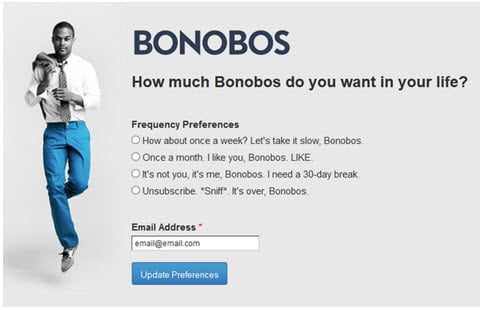True or False with Email Opt-Out Lists
As a customer acquisition professional, you know a lot about traffic generation, promotional development, and campaign implementation. But when was the last time you reviewed your notes on email strategy—in particular, email opt-out lists? We often hear from clients who are terrified of mishandling their opt-outs, and consequently overlook the facts. Some of them are even missing out on related opportunities…
Take a minute to test your knowledge of email opt-out lists. Without peeking, answer true or false for the following statements. (We promise not to judge.)
1. It’s a CAN-SPAM violation to email prospects on a purchased or rented email list.
False. Technically speaking, sending email to prospects on a purchased or rented list is not a CAN-SPAM compliance violation (unless you’re based in Canada or the UK, where explicit opt-in permission is required by national anti-spam laws). But from a brand value perspective, a bought list isn’t that much better than an opt-out list. Both sets of prospects are indifferent toward, or actively disengaged from, your content. There’s no working relationship. Do you really want to be a voice that randomly confronts people with your message?
Another concern surrounding purchased/rented lists involves email service provider (ESP) limitations. Most providers prohibit mailings that come don’t come with express permission. Why? Sending mass emails to unverified addresses affects deliverability—yours and theirs. So steer clear of lists that haven’t been built legitimately.
2. Marketers can minimize their number of unsubscribes by obscuring opt-out mechanisms.
False with a capital F. According to the FTC, your [email] message must include a clear and conspicuous explanation of how the recipient can opt out of getting email from you in the future. Smart marketers abide this rule to the fullest extent, prioritizing customer satisfaction over clinging to more prospects (even those who are looking to bail).
Unfortunately, not all email affiliates are similarly motivated. It’s 2014 and yet we still see examples of opt-out copy built into images (which don’t always load), written in microscopic text, or supported by clunky mechanisms that make it difficult to say “no thanks.” If you think you need help monitoring your email affiliates, you can contact us for more advice.
3. Marketers can minimize their number of unsubscribes by providing opt-out alternatives.
True! Mailers are required to tell recipients how they can stop receiving commercial messages, but they aren’t prohibited from offering less finite alternatives in the process. In fact, most marketing authorities consider it a best practice to offer a menu of options during the unsubscribe process.
What kinds of changes might help you continue—or even improve—your relationship with a frustrated recipient? Try asking if they have a preferred email address. Maybe you’re reaching them at work when they’d rather interact through a personal account. Some may prefer to receive email less frequently. Some may prefer a specific type of offer (for example, sale announcements vs. newsletters). And some may be interested in a very specific topic or product line. Giving prospects other options is a positive tactic you can and should try.
4. Marketers should use formal, legal terminology in their opt-out copy.
Um, false. Just because a recipient doesn’t want to receive your emails anymore, that doesn’t mean they’re swearing off your brand forever. Take the opportunity to say goodbye with style—even humor, if it suits your company voice. Here’s a great example from Bonobos, using not just clever out-out alternatives, but also playful language that promotes likeability above and beyond email.

5. Legally, marketers can share their opt-out email lists with third parties.
False, but with an important corollary. If the third party is an email compliance management company, like UnsubCentral, commissioned to help you manage your suppression lists and opt-out files, then you’re within the law to transfer those email addresses to another organization. For any other reason, sharing opt-out email information is a direct violation of the CAN-SPAM Act.
So how’d you do? If you answered everything correctly, you should print this post and hang it on your fridge. Well done. And if you were surprised by one or more of these email opt-out list facts, you probably aren’t the only one. Share the quiz with your colleagues!
![]()
